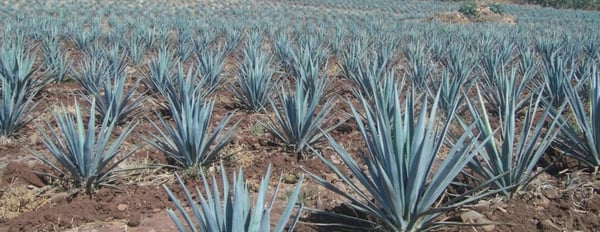
In a previous blog, I talked about handling pagues and diseases in the agave plant. I will elaborate a little more about this topic on this blog.
Diseases associated with the agave plant
In 2002, there was a registry of diseases associated with agave, supported by scientific publications or by local communications. Wilt and bud rot were considered among the most aggressive diseases of the agave, because they cause the death of the plants.
These diseases were triggered in the agave after the frost that took place in December 1997, which caused the death of the meristems (growth points) of the plants, and consequently the rotting of the buds (area at where they are re-produced and detach new leaves).
There was a high incidence of rotting in most of the lands. This disease has been attributed to the action of bacteria, and lately, also to the action of some fungi such as Fusarium sp. It was speculated at the beginning that the weevil of the agave (insect that feeds on the crop) was the vector (which carries the bacteria from one plant to another) of the bacteria yet, until now, it has not been possible to confirm this theory.
There hasn't been another one event as drastic as this one, with the same level of rotting of plants. Yet in all regions, there are still some plants -of different properties- with the presence of bud rot.
Casa Sauza facing these diseases
Among the activities that have been carried out in Sauza, it has been determined that bud rot can start by the inadequate application of some herbicides (substances to kill herbs), and by physical damage that the plants get to suffer in the bud. It has also been observed that when a plant withers, there is a good chance that the bud shows decay, because the tissues are exposed to its colonization by pathogenic organisms or saprophytes (they feed on dead tissues).
Analyses
In the withering case, between 2002 and 2004, plants from different regions were isolated, including roots, pineapple and leaves, both from plants with wilt symptoms as well as asymptomatic plants. In the majority of the isolated plats, the presence of Fusarium sp was found, which is why it was thought that this fungus was NOT the main responsible of the wilt symptom. They were analyzing:
- The habits and damages that the borer insects cause
- The ways in which different herbicides act
- The conditions of the different lands where the symptom was detected
Analyses results
We were able to determine that:
- Borer insects of agave (weevil, cerambic, rhinoceros beetle and white worm) make galleries in the stem or at the base of the plant, which cause the wilt symptom
- It was also detected that some herbicides such as glyphosate, cause the death of roots, which makes the symptom happen.
It was also observed that in those plots where the water is flooded, the roots rot because of a lack of oxygen, causing thus, wilting. Still, it was also observed that in clay soils, located in very hot areas, the wilt symptom appears during the dry season as well.
Then a project was carried out in which the conditions that had been observed were replicated. This helped to later corroborate that there are several factors that cause the symptom, and that the fungus to which the disease is attributed may not necessarily be involved.
Actions taken to defeat these situations
Afterwards, an integrated management of the crop was suggested in order to reduce the presence of these diseases. A greater emphasis was then put on the selection of the lands and, whenever there are areas at where the water floods, drains are made to eliminate excess water.
An agrochemical test procedure was designed in order to to determine their effectiveness as well as the possible damages that they may cause in the agave. Based on this information, we chose those agrochemicals that were less aggressive, or at least, made sure that they were applied in such a way that they wouldn't damage the crop.
At the same time, we have been working with the determination of life cycles, habits and conditions that favor the attack of borer insects, so that by based on this monitoring, we could better determine the most appropriate moment for their control and thus, reduce the incidence of wilt and bud rot.
Learn more about agriculture at Casa Sauza in the following links:
Casa Sauza in search of "Excellence in Agriculture"
The Importance of Pollination in Agriculture
Micropropagation of Certified Blue Agave for Casa Sauza
Digital Geographic Information System in Agriculture at the Tequila Industry
Agriculture 4.0 at the Tequila Industry
You are more than welcome to come to Tequila yourself and visit our production plant so you learn all about the production of tequila on-site.
.png?width=50&height=50&name=10.CS-Redondo%20(1).png)
